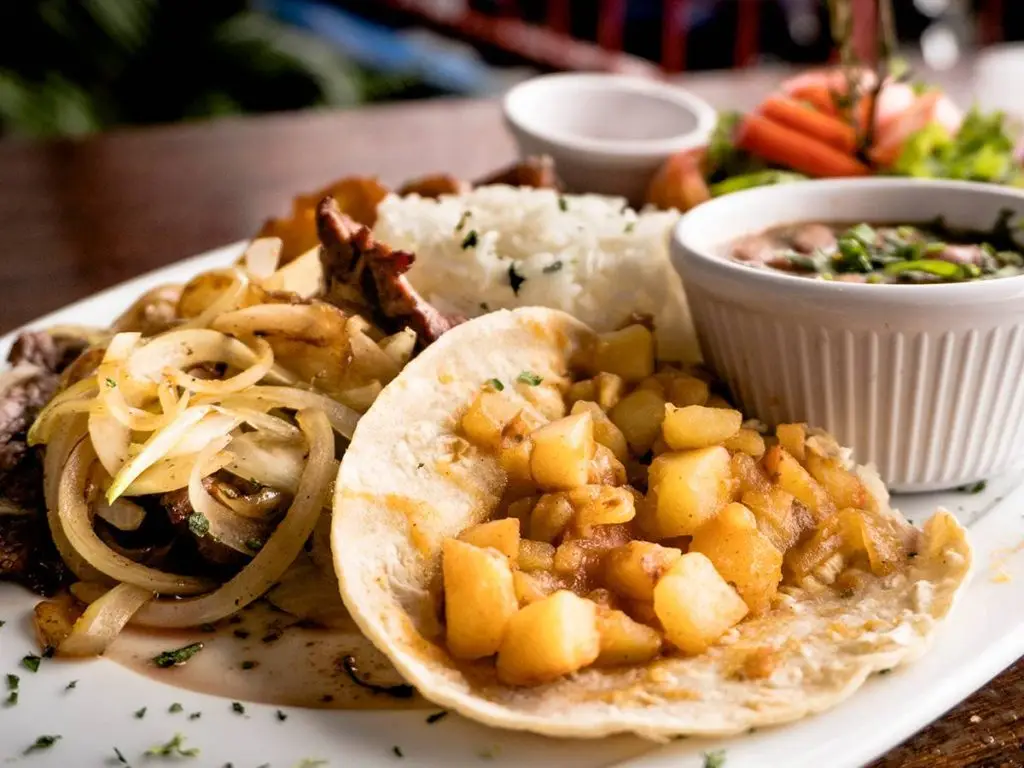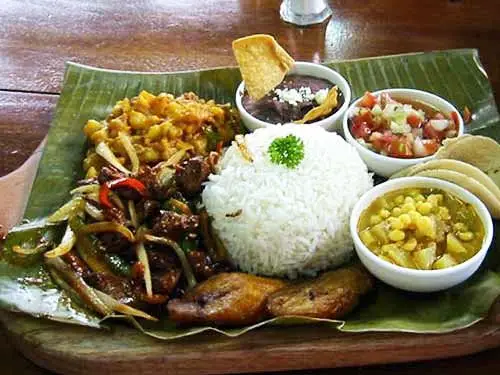The Rich Flavors of Costa Rican Cuisine: A Taste of Pura Vida
Costa Rica, a country renowned for its lush landscapes, stunning beaches, and vibrant biodiversity, also boasts a culinary tradition as rich and varied as its natural wonders. Costa Rican cuisine, an essential part of the country’s culture and lifestyle, embodies the philosophy of “pura vida,” meaning “pure life.” This essay explores the unique aspects of Costa Rican food, its influences, popular dishes, and why it is gaining international recognition. With all the magic of this country, it´s now wonder so many people choose to move to Costa Rica.
A Fusion of Influences:
Costa Rican cuisine reflects a blend of indigenous traditions and colonial influences. Indigenous peoples like the Chorotega and Bribri contributed staple ingredients such as corn, beans, squash, and tropical fruits, which remain central to the diet. The arrival of Spanish colonists introduced European culinary techniques and ingredients, including meats, dairy, and rice. Over time, these elements fused with African and Caribbean flavors, especially along the coastal regions, creating a diverse gastronomic landscape.
In this article, I outline most of Costa Rica’s folkloric dishes. But don´t worry; we have every food in the world that you can think of and excellent restaurants with dishes from all over the world.

Staples of Costa Rican Cuisine:
Costa Rican food is a symphony of flavors, emphasizing simplicity, fresh ingredients, and a harmonious balance that is sure to delight your taste buds. Some of the primary ingredients include:
Rice and Beans: Found in nearly every meal, this iconic combination forms the foundation of Costa Rican cuisine. However, if you go to the Caribbean side of Costa Rica, and ask for rice and beans, you will get a dish like no other. It´s rice and beans, fused with cononut oil, usually accompanied with fish.
Plantains: Whether fried, boiled, or mashed, plantains are a versatile staple, adding sweetness and texture.
Fresh Seafood: In coastal areas, dishes often feature shrimp, fish, and lobster, prepared with Caribbean spices or citrus marinades.
Fresh Fruit: Pineapples, mangoes, papayas, and guavas are enjoyed fresh or as juices and desserts.
Must-try Dishes in Costa Rica:
Costa Rican cuisine offers an array of dishes that capture the essence of its culinary heritage:
- Gallo Pinto: A quintessential Costa Rican breakfast dish of rice and beans mixed with onions, bell peppers, and cilantro, often served with eggs and tortillas.
- Casado: Translating to “married,” this hearty lunch plate combines rice, beans, salad, a choice of protein (chicken, beef, fish, or pork), and fried plantains.
- Olla de Carne: A comforting Costa Rican beef and vegetable stew featuring yucca, corn, carrots, and plantains, perfect for a satisfying meal.
- Ceviche: Fresh fish or shrimp marinated in lime juice with onions, cilantro, and peppers, showcasing Costa Rica’s coastal flavors.
- Tamales: Wrapped in banana leaves, these festive treats contain a mixture of masa (corn dough) filled with meat and vegetables.

More Dishes of Costa Rica:
Chifrijo: A popular Costa Rican bar snack, this layered dish of rice, beans, pork, and pico de gallo is served with tortilla chips.
Chorreadas: Traditional corn pancakes made with fresh corn kernels, milk, and a hint of sugar. These are often served with sour cream or honey for a delightful treat.
Arroz con Pollo: A vibrant rice and chicken dish cooked with a colorful array of vegetables and spices, often served with a side of salad or fried plantains.
Picadillos: Minced or finely chopped vegetables (such as chayote, green beans, or potatoes) mixed with ground meat and spices, usually served as a side dish.
Cajetas: Sweet confections made from condensed milk and sugar, often flavored with coconut, guava, or dulce de leche, perfect for a quick dessert.
Tres Leches Cake: A rich, moist cake soaked in three kinds of milk (evaporated, condensed, and whole), a favorite dessert for special occasions.
Pan Bon: A sweet bread infused with spices and dried fruits, a delicacy from the Caribbean coast.
Vigorón: A traditional snack made of boiled yucca topped with pork rinds (chicharrón) and a tangy cabbage salad, popular in street markets.
Rondón: A Caribbean-inspired soup made with coconut milk, fish or meat, and a mix of vegetables such as yucca and sweet potato, bursting with bold flavors.

Embracing Sustainability and Health:
Costa Rican cuisine aligns with the country’s dedication to sustainability and healthy living. Organic farming and locally sourced ingredients are prevalent, as Costa Rica values its environment and the well-being of its people. Traditional dishes are naturally nutrient-dense, emphasizing whole foods like beans, lean proteins, and fresh produce. Moreover, Costa Rica’s culinary practices often emphasize moderation, fostering a balanced and wholesome diet.
Culinary Tourism in Costa Rica:
As Costa Rica gains prominence as a travel destination, its cuisine is drawing food enthusiasts from around the world. Culinary tours and farm-to-table experiences are popular among visitors eager to learn about traditional Costa Rican recipes and enjoy meals prepared with locally harvested ingredients. Street food vendors, beachside restaurants, and fine dining establishments offer an array of options, ensuring a memorable gastronomic adventure.
Costa Rican Cuisine: A reflection of "Pura Vida"
The heart of Costa Rican cuisine lies in its simplicity, freshness, and celebration of community. Whether enjoying a humble plate of gallo pinto or indulging in a rich bowl of rondón, every meal invites diners to savor the flavors and embrace the culture’s essence. This culinary tradition, steeped in history and shaped by diverse influences, mirrors Costa Rica’s spirit of “pura vida”—a pure and joyful life.
For those seeking to explore authentic Costa Rican food, each bite offers a glimpse into the country’s vibrant culture and its harmonious relationship with nature.
Dr. Christopher Pirie Gil.
CPG LEGAL
